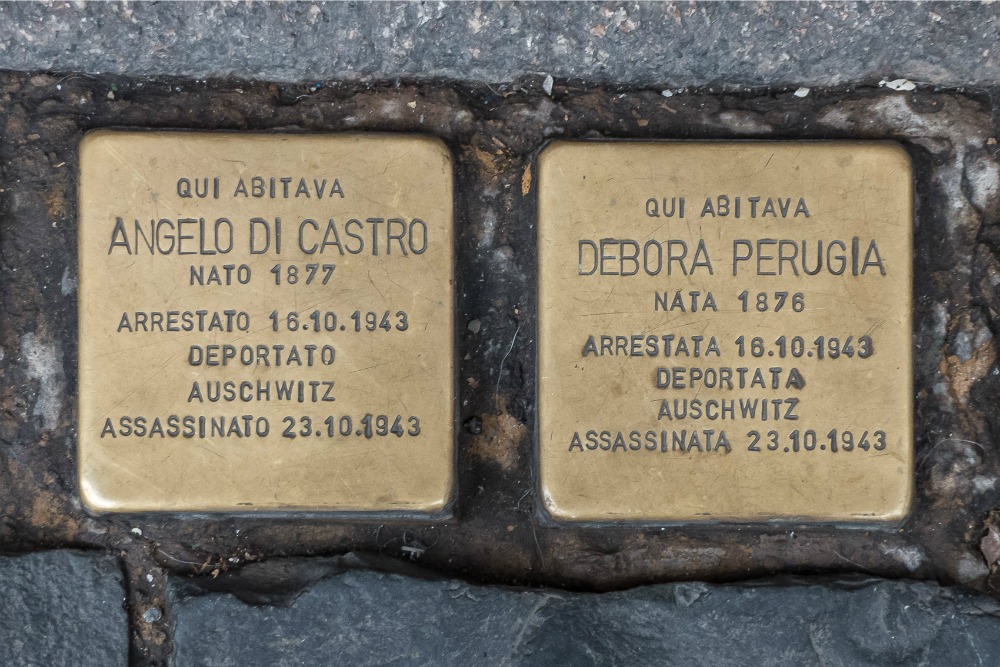Stumbling Stones Via Arenula 16
These small, brass, memorial plaques (Stolpersteine or stumbling stones) commemorate:
* Angelo Di Castro, born 1877, arrested 16 October 1943, deported to Auschwitz, murdered 23 Oct 1943.
* Debora Perugia, born 1876, arrested 16 October 1943, deported to Auschwitz, murdered 23 Oct 1943.
Background
Angelo Di Castro and Debora Perugia were married in 1897. He worked Monday-Friday for a newspaper in Milan, and she ran a shop in Rome near their Via Arenula home. He was a charismatic, severe man "of great goodness." Older grandsons remembered his stinking cigar and his pocket watch. She seemed overwhelmed with grief for years over the pre-Holocaust deaths of 3 of their children.
In the autumn of 1943, Angelo and Debora were arrested, deported and then a week later were killed in Auschwitz-Birkenau, about 2 hours after their arrival there. While the rest of the family had fled, Angelo and Debora had not recognized "the ferocity of the ‘final solution...'" ("la ferocia della ‘soluzione finale'"…).
"Stolpersteine" is an art project for Europe by Gunter Demnig to commemorate victims of National Socialism (Nazism). Stolpersteine (stumbling stones) are small, 10x10cm brass plaques placed in the pavement in front of the last voluntary residence of (mostly Jewish) victims who were murdered by the Nazis. Each plaque is engraved with the victim’s name, date of birth, and place (mostly a concentration camp) and date of death. By doing this, Gunter Demnig gives an individual memorial to each victim. One stone, one name, one person. He cites the Talmud: "A human being is forgotten only when his or her name is forgotten."
Do you have more information about this location? Inform us!
Source
- Text: Fedor de Vries & Anne Palmer
- Photos: Peter Bardwell
- http://www.arteinmemoria.com/
- Stolpersteine.eu
Nearby
Museum
- Napoleonic Museum of Rome - Roma
- Museum Granatieri Di Sardegna - Rome
- Mussolini's Villa Torlonia - Roma
Point of interest
Monument
- Memorial Holocaust - Rome
- Memorial Vittorio Polacco Primary School - Rome
- Memorial Settimio Calò - Rome
Cemetery
- Tomb of the Unknown Soldier - Roma
- Commonwealth War Graves Testaccio Protestant Cemetery - Roma
- Saint Peter's Basilica - Vatican City




